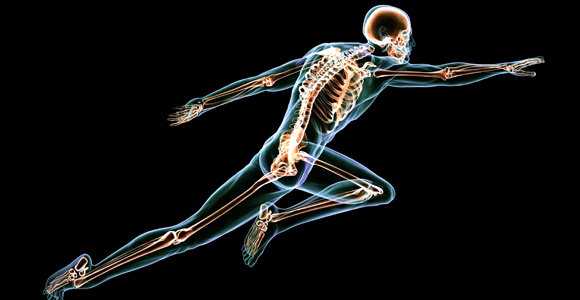You have probably heard that physical activity is important for building and maintaining strong bones. Exercise may help with the formation of bones, improving your bone mineral density (BMD). Previous research has found that putting some physical stress on your bones helps increase bone mass and prevent bone mass loss as you age, but what type of exercise is best for boosting bone health? How much force is needed to actually induce bone growth?
This continues to be studied and there is no clear-cut answer just yet. However, a recent study out of the UK, termed the Avon Longitudinal Study of Parents and Children (ALSPAC), sought to explore how physical activity affected bone mineral density. The study involved a group of adolescents (both male and female) and they were asked to wear activity monitors, which measured how much G force (G forces measure impact) they were exposed to, and just maintain their daily activities. The study participants had hip BMD tests done.
The Results
The researchers found that the teens that performed certain high-impact exercises, specifically vertical impacts that were greater than 4.2 Gs, had stronger hipbones. These types of impacts did not happen very frequently though among the teens.
Previous studies found similar results. One study that came out in January 2014 revealed that females, 25-50 years old, saw significant increases in their hip BMD after four months of hopping 10 times twice daily (with 30 seconds between hops). In the same study, a different group of participants hopped 20 times and saw even higher increases in hip BMD.
What Kind of Exercise is Needed to Produce 4.2 Gs?
The scientists found that you would have to run a 10-minute mile or jump onto and then off of a 15-inch box or higher. What this means for you is that running at a fairly fast pace or jumping onto and off of a pretty tall box could create the amount of force needed to build up your bones.
For healthy teens or adults, this level of physical activity might not seem out of reach. However, for older people, this type of high-impact activity may not be attainable. The ALSPAC researchers did a follow-up study with women aged 60 years or older, asking them to wear activity monitors while doing step aerobics and taking fast-paced walks. The same bone-benefiting effect seen with the teens was not seen in older people because none of them performed high-impact activities at that threshold--the women never got above a G force of 2.1.
The scientists said that G forces less than 4 can help you maintain healthy bones, but they are not sure what amount of G-force impact below 4 is necessary. Further research into exercise intensity and bone health is warranted. In the meantime, if you're healthy, try sprinting, running, hopping, or jumping on high (15-inch) boxes at the gym to build up your bones.
A Word of Caution
Older folks, especially those with a history of osteoporosis or are new to exercise, are more likely to get injured with high-impact activity and should stick to lower-impact exercises. Additionally, if you have a history of joint issues or are unsure of the health of your bones, you should see your doctor before starting any kind of physical activity, especially high-impact exercise. Researchers are trying to learn what level of impact could improve bone health in these individuals.
Kari Hartel, RD, LD is a Registered, Licensed Dietitian and freelance writer based out of St. Louis, MO. Kari is passionate about nutrition education and the prevention of chronic disease through a healthy diet and active lifestyle. Kari holds a Bachelor of Science in Dietetics from Southeast Missouri State University and is committed to helping people lead healthy lives. She completed a yearlong dietetic internship at OSF St. Francis Medical Center in Peoria, IL, where she worked with a multitude of clients and patients with complicated diagnoses. She planned, marketed, and implemented nutrition education programs and cooking demonstrations for the general public as well as for special populations, including patients with cancer, heart disease, diabetes, Alzheimer's disease, obesity, and school-aged children.



